Modernizing Balance Assessments with ForceDecks
Available in:
EN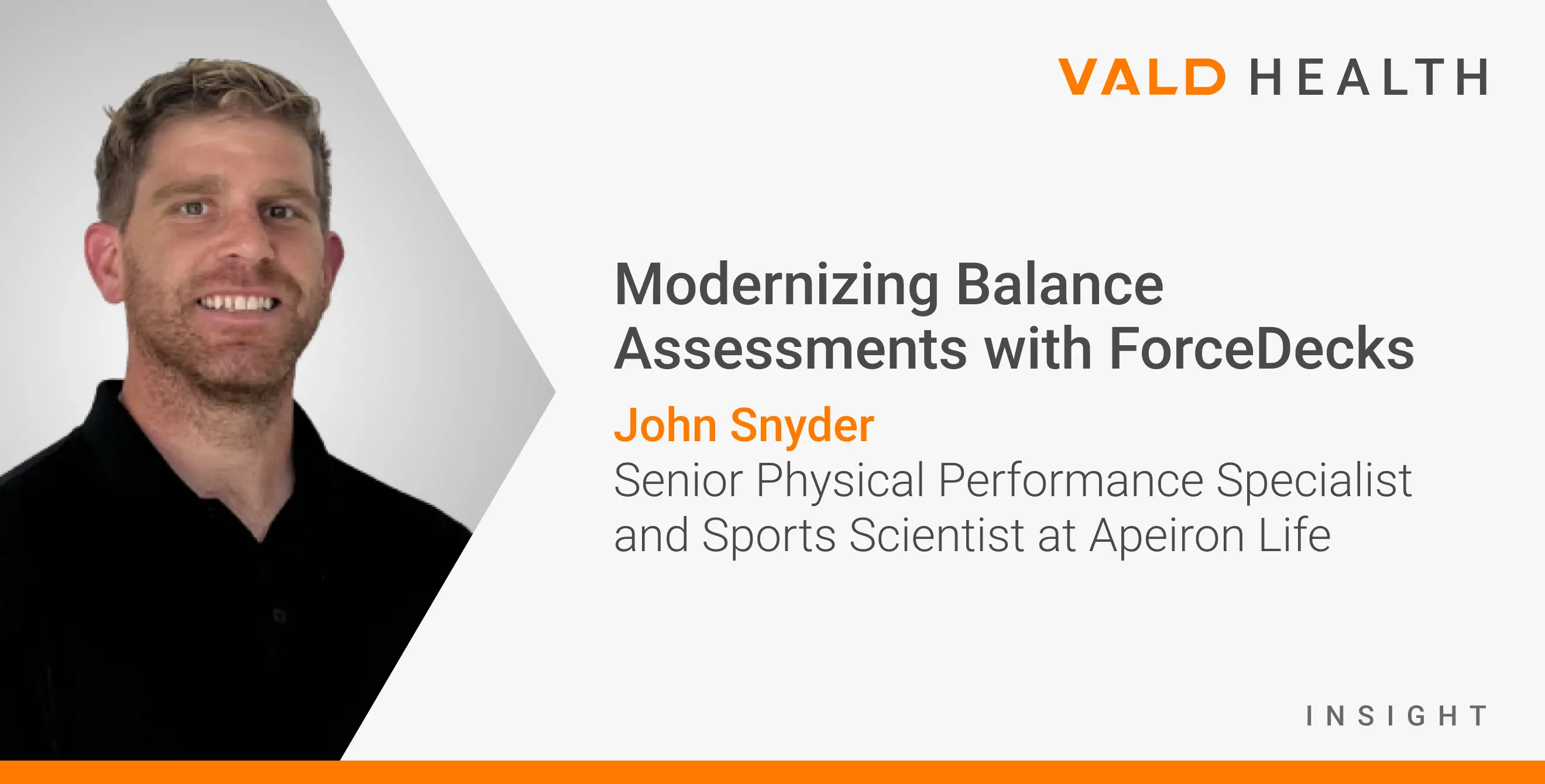
About the Author
John Snyder is a Senior Physical Performance Specialist and Sports Scientist at Apeiron Life, where he integrates cutting-edge advancements in sports and health sciences into daily practice. Previously, John served as a Sports Performance Coach and Sports Scientist at Stanford University, collaborating with a diverse range of teams, including football, swimming, diving, lacrosse and tennis.
In this article, John highlights the growing field of balance training using ForceDecks.
Balance has been a long-standing health and performance quality incorporated into the testing processes of sports, rehab and health practitioners for decades. As a cornerstone of assessment and training, balance is long-established and important across sports, rehabilitation and healthy aging.
The goal of this article is not to review the current balance literature but to show how the implementation of technology can add a high degree of fidelity to current balance tests and update our current balance assessment considerations.
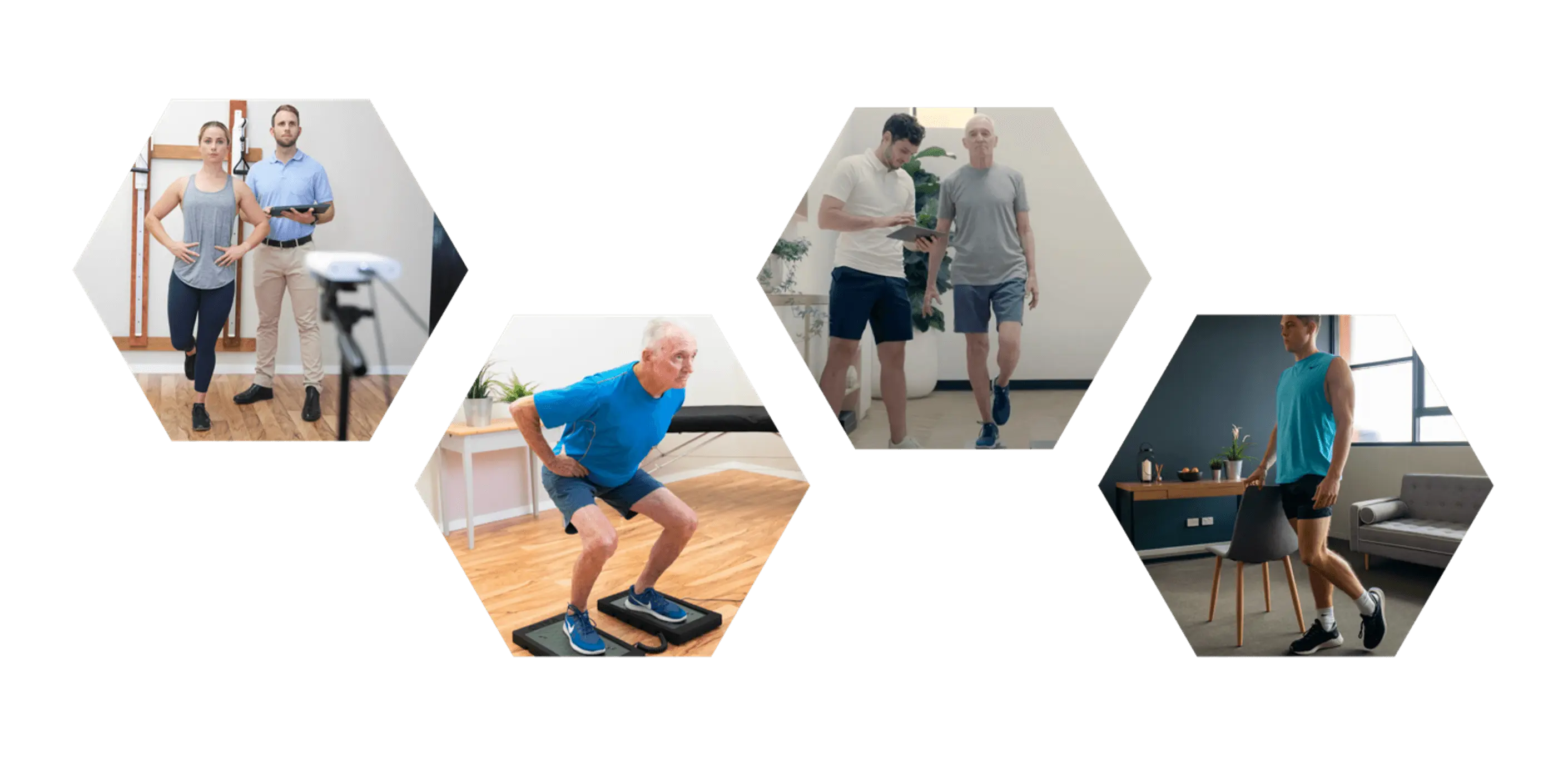
There are far-reaching implications for balance measurement, such as the risk of falls among the elderly and those who have compromised mobility. They are not limited to health or performance but need to be assessed appropriately to help drive the changes needed to help the client.
Underpinning typical balance outcomes (often measured in time) is a topic that we will dive deeper into, called balance strategy, which provides an objective lens of a previously subjective assessment.
As a low-effort, high-reward measurement, we use ForceDecks to provide an in-depth picture of the client’s needs and strengths, creating a baseline checkpoint to inform individualized balance programming.
As a low-effort, high-reward measurement, we use ForceDecks to provide an in-depth picture of the client’s needs and strengths, creating a baseline checkpoint to inform individualized balance programming.
What is balance strategy?
Balance strategy, in short, is the sequencing of muscle actions we use to maintain our center of mass (CoM) within our base of support. Rather than a binary “pass” or “fail” result, measuring balance strategy provides insights into how a client achieves and maintains their balance. Balance or postural control is a complex process relying on the integration of visual inputs, vestibular system function and proprioception.
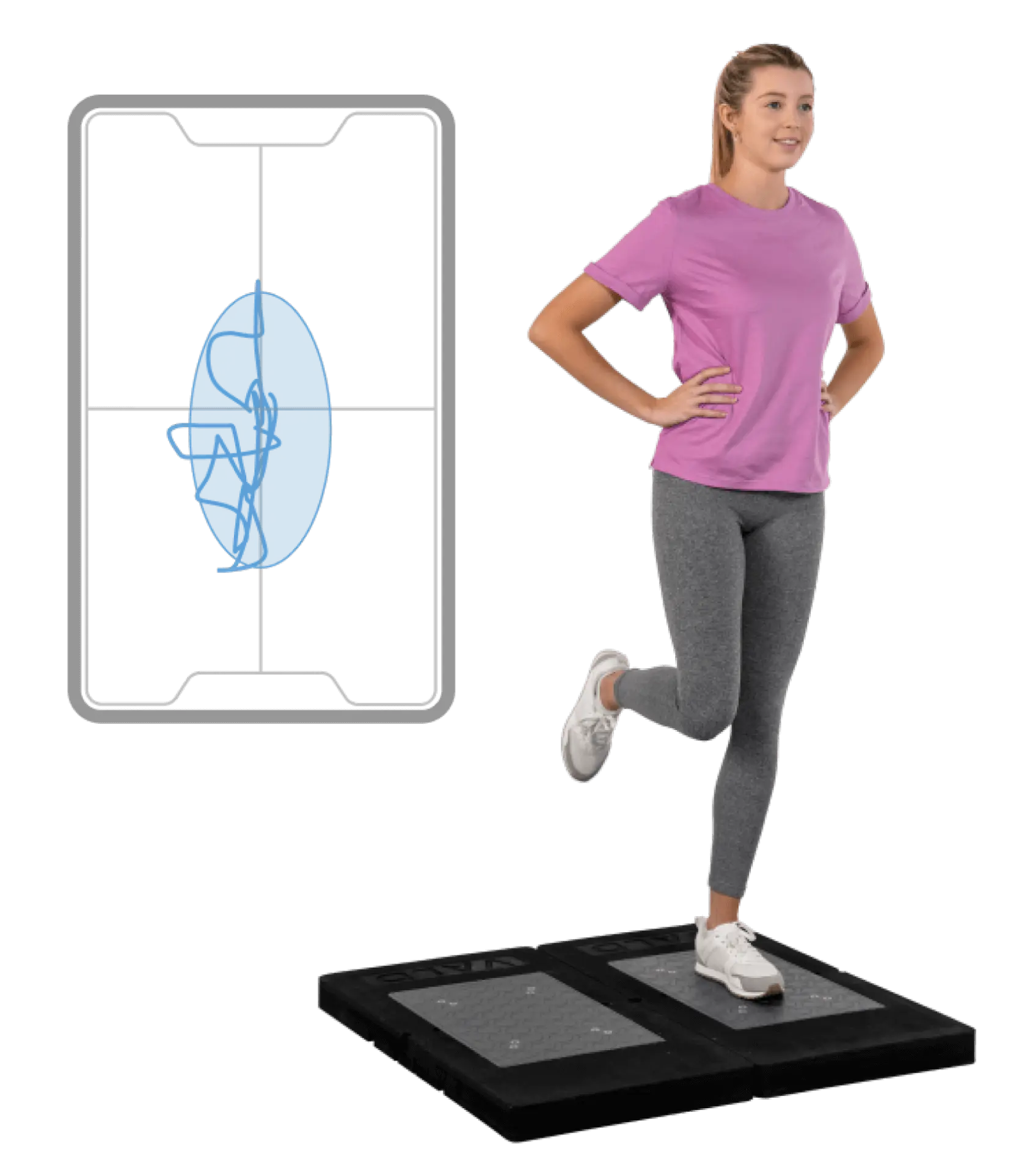
The patient is performing a single leg stand with a center of pressure (CoP) trace.
Traditional balance tests use outcome measures such as timed standing under varying conditions to assess an individual’s balance. Though useful in certain contexts, timed balance assessments lack the sensitivity to aid in prescriptive treatment.
A client may have the same timed balance outcome of 30 seconds (s) before and after a series of visits; however, they may be employing vastly different strategies to maintain their postural control as a result of their training. These varying strategies may elucidate variables that can better explain potential risk for falls or restoration of baseline balance capabilities.
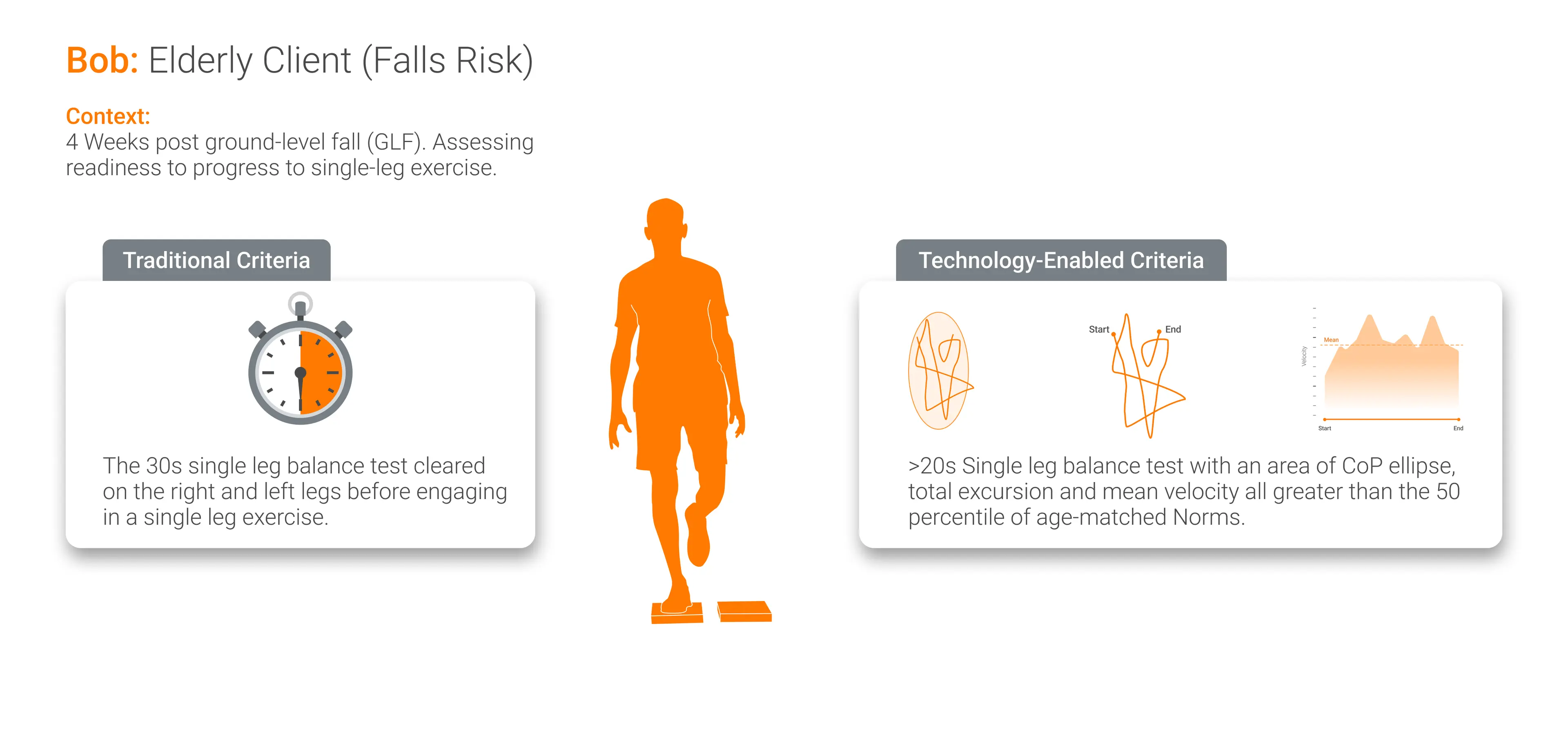
A client may have the same timed balance outcome of 30s before and after a series of visits; however, they may be employing vastly different strategies to maintain their postural control as a result of their training.
How do we measure balance strategy?
As mentioned, strategy is an important underpinning of balance. Rather than simply measuring the outcome of “time,” we can understand what aspects of balance the individual is struggling with to better individualize our balance training. Here are some of the metrics associated with balance strategy.
Establishing a New Balance Testing Battery
While clinicians often feel overwhelmed with creating a new testing process for any training variable, modern technologies have advanced to make this process simple and effective. ForceDecks provides customizable and preset assessments to allow clinicians to perform the same balance tests they currently implement while gaining more actionable insights.
When performing a balance assessment, there are a few metrics we tend to look at total excursion, area of CoP ellipse and mean force asymmetry (quiet stand only). In general, we use three different tests (four for more advanced clients):
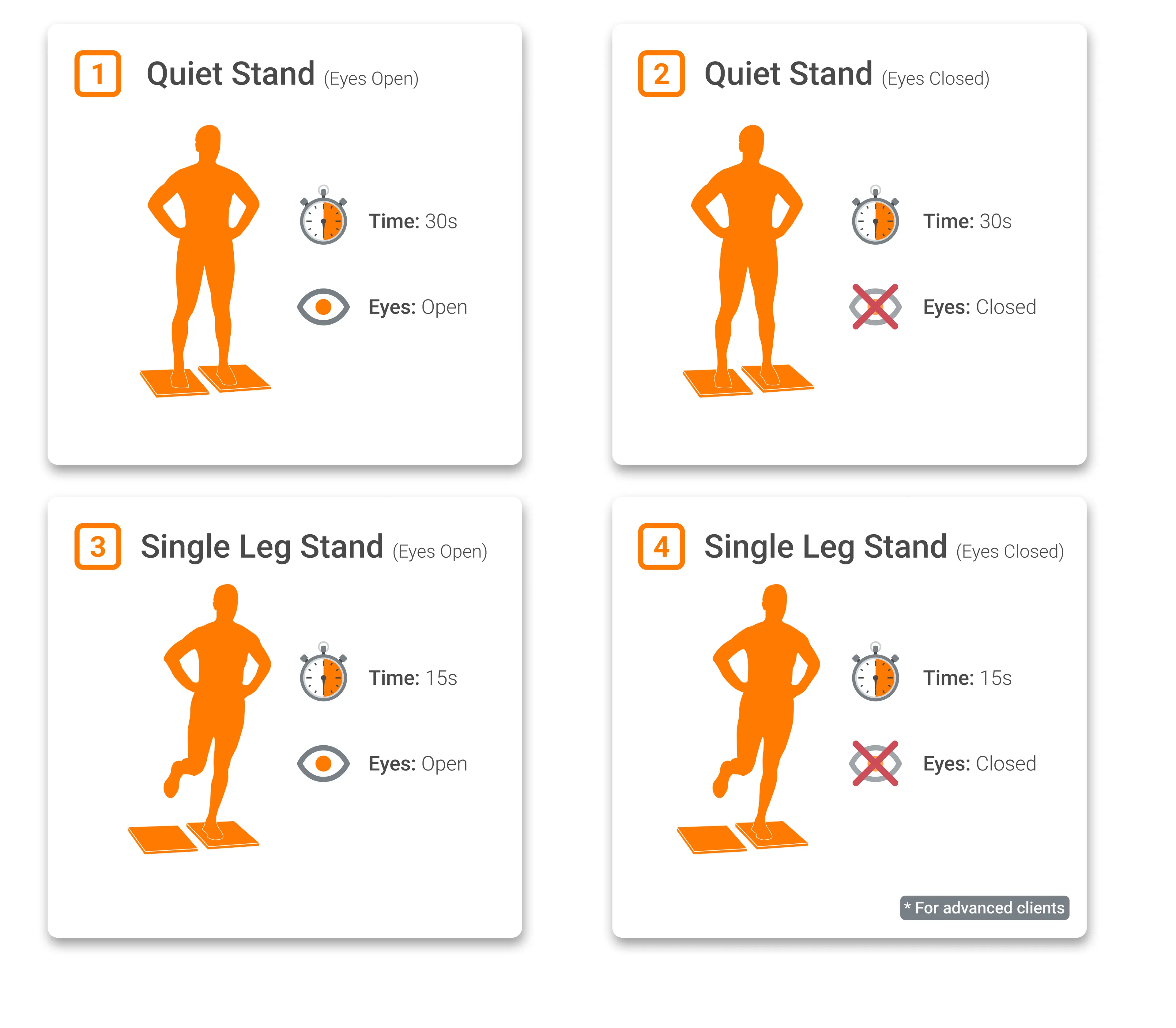
Note: Procedures are modifiable (e.g., time, surface, etc.) to fit your current testing battery.
By performing these tests on ForceDecks, we get insightful metrics that traditional tests do not. By tracking variables like CoP over time, trends can emerge that allow for comparisons between variables, dictating nuanced balance strategies and other trainable qualities.
By tracking variables like CoP over time, trends can emerge that allow for comparisons between variables, dictating nuanced balance strategies and other trainable qualities.
For example, area of CoP ellipse is highly correlated with total excursion; however, when we see a big uncoupling of the area of CoP ellipse and total excursion, we generally see the client compensates higher up the chain in the knee, hip or trunk. Each of these has unique training strategies and needs to be approached differently than other balance impairments.
In the quiet stand test, we also look at mean force asymmetry. This metric gives us a lot of insight into how the client loads left versus right in a static assessment. Significant weight shifting to one side compared to the other provides insights into balance strategies that can be addressed through individualized training.
It is often daunting to understand what to do with the data once it is collected. However, building frameworks can help guide decision-making and drive programming considerations while reducing the mental fatigue that often occurs when individualizing client programs. Below is a simple series of questions that help to guide decision-making in a balance assessment.
Decision-Making Framework for Task Selection
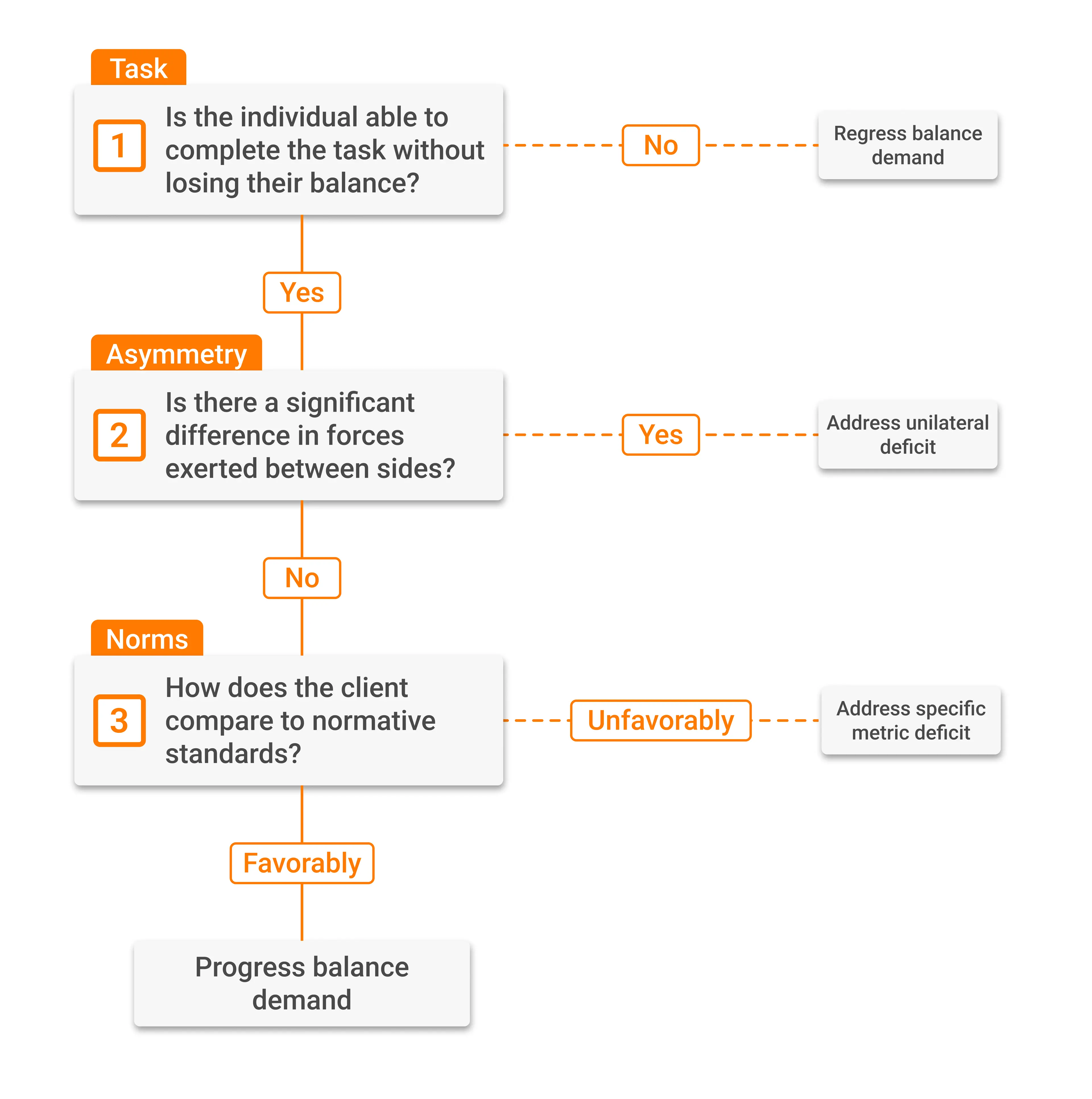
Adopting new technology often introduces new test protocols and data, requiring practitioners to invest time in understanding the system while navigating pressure for quick results from client expectations. We use ForceDecks with familiar tests, such as quiet stand, single leg stand and range of stability, which simplifies the implementation process, allowing us to focus on our clients rather than the technology.
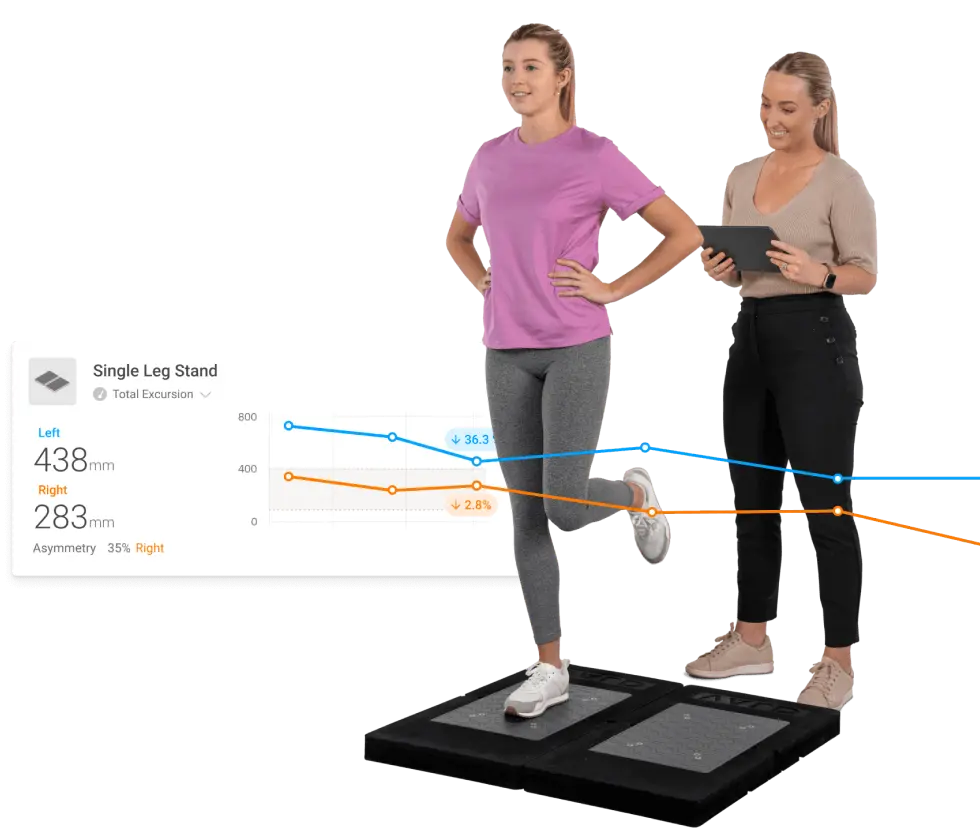
Test: Quiet Stand
The quiet stand test is a simple and accessible assessment, often appropriate for various injury histories and chronic conditions. Live CoP traces can be helpful feedback to show clients their real-time balance strategy, improving engagement during low-intensity exercises.
Live CoP traces can be helpful feedback to show clients their real-time balance strategy, improving engagement during low-intensity exercises.
If balance deficits are noted in this bilateral task, asymmetrical loading options and carries are often used to restore balance capacities.
Next, balance can further be challenged with their eyes closed. Significant differences between eyes open and closed can indicate a reliance on visual input. Even if asymmetry improves (e.g., from 12% left to 4% right), changes in balance metrics between eyes open and eyes closed indicate a change in the self-selected balance strategy of the individual, which may provide more information on how to best intervene.
Even if asymmetry improves…changes in balance metrics between eyes open and eyes closed indicate a change in the self-selected balance strategy of the individual, which may provide more information on how to best intervene.
Below is a table outlining an assessment and intervention process, guided by strategy metrics, for bilateral balance tasks:
| Metrics | Threshold | Intervention |
|---|---|---|
| Mean Force Asymmetry | >10% Asymmetry (or compared to Norms) | Phase 1: Help the client understand what symmetrical posture feels like.
|
Phase 2: Re-pattern symmetrical stance with advanced techniques.
| ||
Phase 3: Increase single leg strength, stability and confidence.
| ||
| Mean Force Asymmetry (Eyes Closed) | >10% Asymmetry (compared to eyes open) | Phase 1: Improve proprioceptive capacities.
|
Phase 2: Increase awareness through dynamic exercises.
| ||
Phase 3: Increase awareness without visual input.
|
Test: Single Leg Stand
Area of CoP ellipse and total excursion are key metrics for the single leg stand test. Much like quiet stand, these metrics often trend together, but we want to measure both to understand if or when they diverge from each other.
If these metrics trend together, a ground-up approach focusing on the ankle, knee and hip is recommended. If they diverge, a top-down approach targeting core and pelvic stability is more effective.
For example, with an area of CoP ellipse of 0.78in² (508mm²) on the right and 0.67in² (443mm²) on the left and total excursions of 22.4in (569mm) and 23.7in (603mm), I would focus on ankle-related balance exercises.
On the contrary, if there is a very large area of CoP ellipse and a small total excursion, I have found it more useful to work from the top down. Focusing more on the core, hip and ankle helps establish greater control, enabling the individual to control their movements better and reduce the area of CoP ellipse.
To help guide further decision-making, the table below outlines an assessment and intervention process with metric selection for unilateral balance tasks:
| Metrics | Threshold | Intervention |
|---|---|---|
| Area of 95% CoP Ellipse | >10% Asymmetry (or compared to Norms) | Phase 1: Strengthen hips and core for stable force transmission.
|
Phase 2: Improve core and hip stabilization.
| ||
Phase 3: Improve activation and timing of stabilization.
| ||
| Mean Force Asymmetry (Eyes Closed) | >10% Asymmetry (or compared to Norms) | Phase 1: Strengthen ankle and improve motor control.
|
Phase 2: Increase task complexity.
|
These are examples and progressions that serve as an entry point for balance testing and training. However, it is important to contextualize and audit the rehabilitation and training process with retesting to understand the dose-response relationship between training and outcomes.
In unique cases such as a long-standing low back pain case, it is important to appreciate its complexity and the many factors that may contribute to an individual’s pain experience and balance impairment.
Using ForceDecks has allowed for seamless balance assessment with person-centered insights into our clients’ health, rehabilitation status and performance. Assessments are low-risk, time efficient and provide highly detailed information that other assessments fail to provide.
Using ForceDecks has allowed for seamless balance assessment with person-centered insights… [While] assessments are low-risk, time efficient and provide highly detailed information that other assessments fail to provide.
New research is continuously advancing and gaining traction in many functional tests currently used by practitioners. Future research will likely investigate straightforward, time-efficient balance assessments that are highly applicable to real-world settings in sports and aging populations.
If you would like to know more about how to integrate VALD’s human measurement technology into your organization to help with the engagement of your clients, please reach out here.
